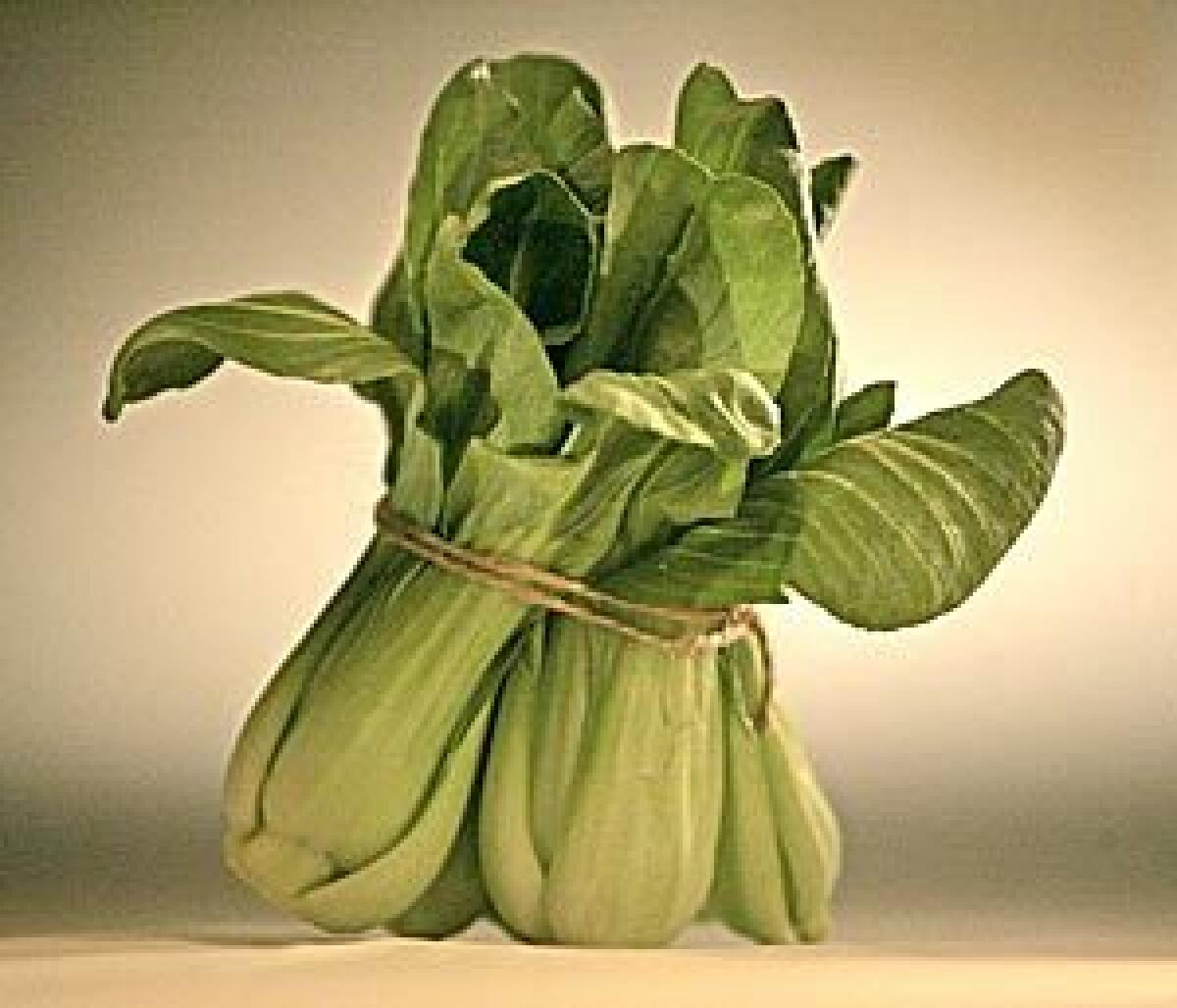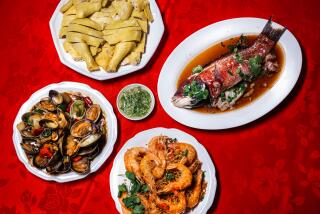Chinese cabbages: How to choose, store and cook

Bok choy has made it into the American produce mainstream, but there are other Asian greens and Chinese cabbages that are worth exploring. Two of the most interesting are the vegetables called choy sum and Shanghai, or baby bok choy. These are both relatives of bok choy.
They are brassicas, related to cabbages and broccoli. Choy sum tends toward the mustardy side of the equation, kind of like broccoli. It looks something like regular bok choy, but has thinner stems, darker leaves and tell-tale yellow flowers. Milder Shanghai, or baby bok choy, looks like bok choy’s prettier sister (it’s not really a baby, of course, it’s just smaller, even at full maturity). In addition to its petite size, baby bok choy has wide, spoon-shaped stems and pale-green leaves. While bok choy is usually sold by the head, baby bok choy is sold three or four heads to the bunch.
Choosing: As with all cooking greens, you want leaves and stems that are rigid and firm, not wilting. Avoid greens with black spots on the leaves, which are a sign of breakdown.
Storing: Greens should be refrigerated immediately in a humid environment, such as the crisper drawer. Keep them in plastic bags, but if you’re going to store them for very long, slip in a paper towel to absorb any condensation.
Cooking: The cabbages can be used interchangeably in recipes.
More to Read
Sign up for The Wild
We’ll help you find the best places to hike, bike and run, as well as the perfect silent spots for meditation and yoga.
You may occasionally receive promotional content from the Los Angeles Times.










